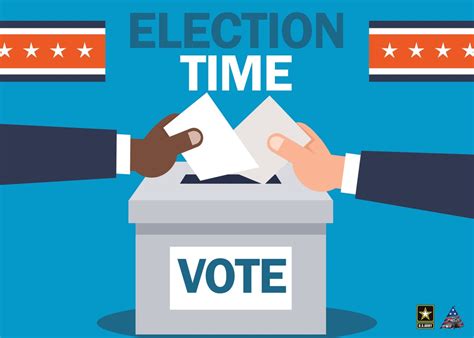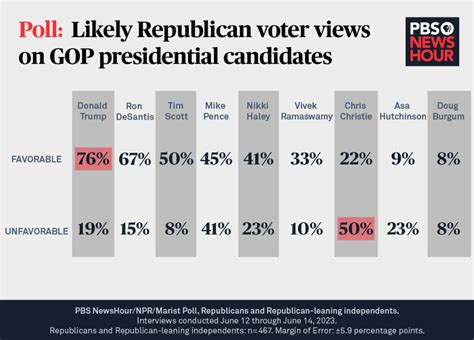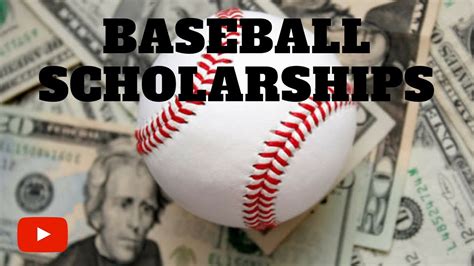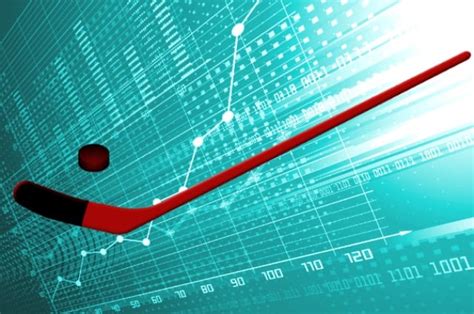Discover essential hockey skills, key drills, stretching techniques, teamwork importance, progress tracking, and top resources to elevate your game.Hockey is an exhilarating sport that requires a unique blend of skills, strategy, and teamwork. For players at any level, mastering essential hockey skills is crucial to enhancing performance on the ice. Whether you’re a beginner looking to grasp the basics or a seasoned player striving to refine your techniques, understanding the core skills is the first step to success. In this article, we will explore the fundamental hockey skills every player should master, provide key drills to practice, and highlight the importance of teamwork, stretching, and tracking progress. Additionally, we’ll share valuable resources to help you take your game to the next level. Get ready to elevate your hockey expertise and performance with these essential insights!
Understanding The Fundamentals Of Essential Hockey Skills
Mastering hockey skills begins with a solid understanding of its fundamental components. These skills form the foundation of a player’s ability on the ice and can significantly impact performance during games. Here are the core fundamentals every player should focus on:
- Skating: The ability to skate effectively is crucial in hockey. Players must develop their forward and backward skating, as well as their ability to pivot and maintain balance. Good skating allows players to position themselves strategically on the ice.
- Puck Handling: The skill of controlling the puck is central to successful gameplay. This includes the ability to pass, shoot, and stickhandle effectively under pressure. Mastering puck handling enhances a player’s overall game IQ.
- Shooting: Scoring goals is a primary objective in hockey, making shooting skills vital. Players should practice different shooting techniques, including wrist shots, slap shots, and backhands, to become versatile goal scorers.
- Passing: Effective passing is essential for maintaining possession and setting up plays. Players need to work on their accuracy and timing for both short and long passes to ensure smooth team dynamics.
- Positioning: Understanding where to position oneself in various situations can significantly impact both offensive and defensive play. Players should learn to read the game and anticipate movements to find optimal spots on the ice.
Focusing on these foundational hockey skills through dedicated practice and drills creates a more skilled and versatile player. Building a strong base allows for more advanced techniques to be integrated into one’s game, facilitating continuous improvement and success on the ice.
Key Drills To Develop Core Hockey Skills
Mastering hockey skills requires consistent practice and the right drills. Here are some essential drills to enhance your core abilities:
- Puck Control Drills: Practice handling the puck in tight spaces. Set up cones in a zigzag formation and weave through them while carrying the puck. Gradually increase the speed as you become more comfortable.
- Passing Drills: Pair up with a teammate and practice accuracy in passing. Stand at a distance and target specific areas on the rink to hit with your pass. Incorporate one-touch passes to build quick reactions.
- Shooting Drills: Work on shooting from different angles. Set up targets in the goal and aim for them with wrist shots, slap shots, and backhands. Focus on technique, including follow-through and body positioning.
- Skating Drills: Speed and agility are crucial. Practice forward and backward skating, as well as quick turns. Use a stopwatch to challenge yourself and track improvements in your racing times.
- Defensive Drills: Work on your defensive stance and positioning. Pair up with a teammate and practice body checking and puck battles. Understanding how to effectively defend is key to enhancing your overall hockey skills.
Incorporating these drills into your training regimen will ensure that you develop the core hockey skills necessary to excel on the ice. Consistency is key, so aim to practice regularly for the best results.
Incorporating Stretching For Improved Hockey Skills
One crucial aspect that often gets overlooked in the development of hockey skills is the importance of proper stretching. Incorporating a dedicated stretching routine can significantly enhance a player’s performance on the ice. Not only does stretching help prevent injuries, but it also contributes to increased flexibility, strength, and overall agility, which are essential for executing hockey techniques effectively.
Here are some key benefits of integrating stretching into your training regimen:
- Injury Prevention: Regular stretching can reduce the risk of strains and sprains by promoting flexibility in the muscles and joints.
- Enhanced Performance: Improved flexibility allows for a greater range of motion, enabling players to execute complex movements required in hockey skills.
- Faster Recovery: Stretching aids in muscle recovery post-game or post-training, helping to alleviate soreness and stiffness.
- Better Posture: Stretching helps to maintain proper body alignment, which is crucial for optimal performance and reducing the risk of injury.
To effectively incorporate stretching into your routine, consider these types of stretches:
- Dynamic Stretches: Incorporate dynamic movements before practice or a game to warm up muscles. Examples include leg swings, arm circles, and lunges with a twist.
- Static Stretches: Post-practice, static stretches like hamstring stretches, quadriceps pulls, and hip flexor stretches can enhance flexibility and promote relaxation.
- Foam Rolling: Using a foam roller can help release muscle tightness and improve blood circulation, complementing traditional stretching practices.
Incorporating stretching into your training for better hockey skills is not just beneficial; it’s essential for any player looking to improve their game. Make sure to dedicate time before and after your sessions to work on flexibility, and you’ll likely notice significant improvements on the ice.
The Role Of Teamwork In Enhancing Hockey Skills
In hockey, individual talent is undeniably important; however, the value of teamwork cannot be overstated when it comes to honing hockey skills. The essence of hockey lies in its collaborative nature, where players must work together to achieve common objectives. Here’s how teamwork contributes significantly to enhancing hockey skills:
- Communication: Effective communication among teammates is crucial. By calling for the puck, providing feedback, and discussing plays, players develop their understanding of game dynamics, thereby improving their individual hockey skills.
- Support in Drills: Practicing with teammates can lead to a better understanding of game scenarios. Whether it’s passing drills, shooting practices, or defensive strategies, having a partner encourages a supportive environment for skill development.
- Learning From Each Other: Playing alongside others allows players to observe different styles and techniques, gaining insight that can inspire personal growth. This collaborative learning process can propel the enhancement of hockey skills.
- Building Chemistry: Familiarity with teammates fosters better on-ice chemistry, leading to improved coordination during games. This chemistry is essential for executing plays effectively, which in turn sharpens hockey skills.
- Moral Support: Team dynamics create an environment where players can motivate one another, encouraging them to push their limits and strive for improvement in their hockey skills.
While individual training is vital for developing hockey skills, the role of teamwork amplifies these skills. Players who learn to communicate effectively, support each other during practice, and cultivate strong relationships on the ice are likely to witness significant improvements in their overall game performance.
Tracking Progress: Measuring Improvement In Hockey Skills
Measuring improvement in hockey skills is crucial for players who wish to enhance their performance and reach their full potential. Regularly tracking progress allows players to identify strengths, weaknesses, and areas that require additional focus. Here are some effective methods for monitoring your development in hockey skills:
1. Self-Assessments:
Conducting self-assessments at regular intervals can help you understand where you stand in terms of your hockey skills. Create a checklist that covers various skills such as passing accuracy, shooting power, puck handling, and skating speed. Rate yourself on a scale from 1 to 10 and take notes on specific areas that need improvement.
2. Video Analysis:
Utilizing video technology can be an effective way to analyze and improve your hockey skills. Record practice sessions or games, and then review the footage to observe your technique, positioning, and decision-making on the ice. This visual feedback will highlight both successes and areas that may require refinement.
3. Performance Metrics:
Leverage performance metrics such as goals scored, assists, time on ice, and plus/minus ratings to quantify your improvement. Keeping track of these statistics over time can provide insight into the effectiveness of your training and the growth of your hockey skills.
4. Seek Feedback:
Consult with coaches, teammates, or experienced players who can provide constructive feedback on your hockey skills. Engaging in discussions about your performance can offer new perspectives and tips for improvement that you may not have considered.
5. Set SMART Goals:
Establish Specific, Measurable, Achievable, Relevant, and Time-bound (SMART) goals related to your hockey skills. For instance, you might aim to increase your shooting accuracy by 15% over the next three months. Regularly evaluate your progress toward these goals to stay motivated and focused.
6. Regular Testing:
Incorporate periodic skill tests into your training regimen. For example, you could set up drills to measure puck control under pressure or speed in crossovers. By consistently testing your abilities, you can observe quantifiable changes in your hockey skills.
In summary, accurately tracking your progress in hockey skills is essential for meaningful development. By incorporating self-assessments, video analysis, performance metrics, and feedback from others, you can achieve continuous improvement that enhances your overall performance on the ice.
Best Resources For Mastering Hockey Skills
To effectively enhance your hockey skills, utilizing the right resources is crucial. Here are some of the best resources available for players of all levels:
- Online Video Tutorials: Platforms like YouTube and specialized coaching sites offer numerous video tutorials that break down various techniques, drills, and strategies. Channels focused on hockey often feature professional players demonstrating the core skills needed.
- Books and E-Books: Various authors have written comprehensive guides on mastering hockey skills. Look for books that focus on specific areas like shooting, passing, and skating techniques for in-depth knowledge.
- Mobile Apps: There are mobile applications designed to assist players with drills, fitness, and skill development. Look for apps with instructional videos and customizable training plans that cater to your specific needs.
- Local Clinics and Camps: Participating in hockey clinics and camps can provide hands-on experience and professional coaching. These events often allow players to focus on their hockey skills with expert guidance.
- Online Forums and Communities: Engaging with online forums and communities such as Reddit or dedicated hockey sites can offer insight into different training methods. You can ask questions, share experiences, and learn from fellow players.
- Coaching Resources: If you’re a coach or looking to improve your teaching methods, there are several resources available that focus on drills, player development, and game strategies tailored to enhance overall hockey skills.
By utilizing these resources, you can create a personalized training plan that helps you systematically improve your hockey skills, making you a well-rounded player on the ice.
Frequently Asked Questions
What are the most crucial skills every hockey player should develop?
Some of the most crucial skills include skating, puck handling, passing, shooting, and positioning.
How important is skating technique in hockey?
Skating technique is vital, as it forms the foundation for all other skills in hockey, allowing players to navigate the ice effectively.
What drills can players practice to improve their puck handling?
Players can practice stickhandling drills, such as weaving between cones or using figure-eight patterns, to enhance their puck handling skills.
Why is passing considered an essential hockey skill?
Passing is essential as it facilitates team play and enhances offensive strategies, allowing teammates to receive the puck in advantageous positions.
What types of shots should a player master?
Players should master wrist shots, slap shots, and snap shots, as each offers different advantages in various situations on the ice.
How can players improve their defensive positioning?
Improving defensive positioning involves understanding the game, including reading plays, maintaining a proper gap from opponents, and anticipating their moves.
What role does teamwork play in developing these essential hockey skills?
Teamwork is crucial, as hockey is a team sport; players must work together to maximize their skills and strategies for success on the ice.









